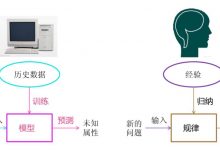[TOC]
explain 命令
在 select 语句之前增加 explain 关键字,MySQL 会在查询上设置一个标记,从而在执行查询时,会返回执行计划的信息,而不是执行这条 SQL 。
explain 命令可以获取 MySQL 如何执行 SELECT 语句的信息,来查看一个这些 SQL 语句的执行计划,如该 SQL 语句有没有使用上了索引、有没有做全表扫描等。这是查询性能优化不可缺少的一部分,因此平时在进行 SQL 开发时,都要养成用 explain 分析的习惯。
mysql> explain select * from actor;+----+-------------+-------+------+---------------+------+---------+------+------+-------+| id | select_type | table | type | possible_keys | key | key_len | ref | rows | Extra |+----+-------------+-------+------+---------------+------+---------+------+------+-------+| 1 | SIMPLE | actor | ALL | NULL | NULL | NULL | NULL | 2 | NULL |+----+-------------+-------+------+---------------+------+---------+------+------+-------+
expain 出来的信息有 10 列,分别是 id、select_type、table、type、possible_keys、key、key_len、ref、rows、Extra 。下面对这些字段出现的可能进行解释:
| 列名 | 说明 |
|---|---|
| id | 执行编号,有几个 select 就有几个 id |
| select_type | 表示本行是简单的还是复杂的 select |
| table | 正在访问哪一个表(表名或别名) |
type |
表示关联类型或访问类型,即 MySQL 决定如何查找表中的行 |
| possible_keys | 哪些索引可以优化查询 |
key |
实际采用哪个索引来优化查询 |
| key_len | 索引字段的长度 |
| ref | 显示了之前的表在 key 列记录的索引中查找值所用的列或常量 |
rows |
为了找到所需的行而需要读取的行数(估算值,并不精确) |
Extra |
执行情况的额外描述和说明 |
| partitions (MySQL 8 新增) |
如果查询是基于分区表的话,会显示查询将访问的分区 |
| filtered (MySQL 8 新增) |
按表条件过滤的行百分比。 rows * filtered/100 可以估算出将要和 explain 中前一个表进行连接的行数(前一个表指 explain 中的 id 值比当前表 id 值小的表) |
explain 之后还可以通过 show warnings 命令得到优化后的查询语句,从而看出优化器优化了什么。
mysql> explain extended select * from film where id = 1;+----+-------------+-------+-------+---------------+---------+---------+-------+------+----------+-------+| id | select_type | table | type | possible_keys | key | key_len | ref | rows | filtered | Extra |+----+-------------+-------+-------+---------------+---------+---------+-------+------+----------+-------+| 1 | SIMPLE | film | const | PRIMARY | PRIMARY | 4 | const | 1 | 100.00 | NULL |+----+-------------+-------+-------+---------------+---------+---------+-------+------+----------+-------+mysql> show warnings;+-------+------+--------------------------------------------------------------------------------+| Level | Code | Message |+-------+------+--------------------------------------------------------------------------------+| Note | 1003 | /* select#1 */ select \'1\' AS `id`,\'film1\' AS `name` from `test`.`film` where 1 |+-------+------+--------------------------------------------------------------------------------+
id
id 列的编号是 select 的序列号,有几个 select 就有几个 id,且 id 越大的语句越先执行。
- 如果是子查询,则会有递增的多个 id 值,那么 id 值越大表示优先级越高,越先被执行。
- id 值可能为 NULL,表示这一行是其他行的联合结果;
- id 如果相同,可以认为是一组,从上往下顺序执行。
MySQL 将 select 查询分为简单查询和复杂查询。复杂查询又分为三类:简单子查询、派生表(from 语句中的子查询)、union 查询。
简单子查询:
mysql> explain select (select 1 from actor limit 1) from film;+----+-------------+-------+-------+---------------+----------+---------+------+------+-------------+| id | select_type | table | type | possible_keys | key | key_len | ref | rows | Extra |+----+-------------+-------+-------+---------------+----------+---------+------+------+-------------+| 1 | PRIMARY | film | index | NULL | idx_name | 32 | NULL | 1 | Using index || 2 | SUBQUERY | actor | index | NULL | PRIMARY | 4 | NULL | 2 | Using index |+----+-------------+-------+-------+---------------+----------+---------+------+------+-------------+
from 子句中的子查询:
mysql> explain select id from (select id from film) as der;+----+-------------+------------+-------+---------------+----------+---------+------+------+-------------+| id | select_type | table | type | possible_keys | key | key_len | ref | rows | Extra |+----+-------------+------------+-------+---------------+----------+---------+------+------+-------------+| 1 | PRIMARY | <derived2> | ALL | NULL | NULL | NULL | NULL | 2 | NULL || 2 | DERIVED | film | index | NULL | idx_name | 32 | NULL | 1 | Using index |+----+-------------+------------+-------+---------------+----------+---------+------+------+-------------+
如上述查询执行时有个临时表别名为 der,外部 select 查询引用了这个临时表。
union 查询:
mysql> explain select 1 union all select 1;+----+--------------+------------+------+---------------+------+---------+------+------+-----------------+| id | select_type | table | type | possible_keys | key | key_len | ref | rows | Extra |+----+--------------+------------+------+---------------+------+---------+------+------+-----------------+| 1 | PRIMARY | NULL | NULL | NULL | NULL | NULL | NULL | NULL | No tables used || 2 | UNION | NULL | NULL | NULL | NULL | NULL | NULL | NULL | No tables used || NULL | UNION RESULT | <union1,2> | ALL | NULL | NULL | NULL | NULL | NULL | Using temporary |+----+--------------+------------+------+---------------+------+---------+------+------+-----------------+
union 结果总是放在一个匿名临时表中,因为临时表不在 SQL 中出现,因此它的 id 是 NULL 。
select_type
select_type 表示对应行是简单还是复杂的查询,如果是复杂的查询,又是上述三种复杂查询中的哪一种。
-
simple
:简单查询,即查询不包含子查询和 union。
mysql> explain select * from film where id = 2;+----+-------------+-------+-------+---------------+---------+---------+-------+------+-------+| id | select_type | table | type | possible_keys | key | key_len | ref | rows | Extra |+----+-------------+-------+-------+---------------+---------+---------+-------+------+-------+| 1 | SIMPLE | film | const | PRIMARY | PRIMARY | 4 | const | 1 | NULL |+----+-------------+-------+-------+---------------+---------+---------+-------+------+-------+
-
primary
:复杂查询中最外层的 select。 -
subquery
:包含在 select 中的子查询(不在 from 子句中)。 -
derived
:包含在 from 子句中的子查询。MySQL 会将结果存放在一个临时表中,也称为派生表(derived 的英文含义)。
mysql> explain select (select 1 from actor where id = 1) from (select * from film where id = 1) der;+----+-------------+------------+--------+---------------+---------+---------+-------+------+-------------+| id | select_type | table | type | possible_keys | key | key_len | ref | rows | Extra |+----+-------------+------------+--------+---------------+---------+---------+-------+------+-------------+| 1 | PRIMARY | <derived3> | system | NULL | NULL | NULL | NULL | 1 | NULL || 3 | DERIVED | film | const | PRIMARY | PRIMARY | 4 | const | 1 | NULL || 2 | SUBQUERY | actor | const | PRIMARY | PRIMARY | 4 | const | 1 | Using index |+----+-------------+------------+--------+---------------+---------+---------+-------+------+-------------+
-
union
:在 union 中的第二个和之后的 select 。 -
union result
:从 union 临时表检索结果的 select 。
mysql> explain select 1 union all select 1;+----+--------------+------------+------+---------------+------+---------+------+------+-----------------+| id | select_type | table | type | possible_keys | key | key_len | ref | rows | Extra |+----+--------------+------------+------+---------------+------+---------+------+------+-----------------+| 1 | PRIMARY | NULL | NULL | NULL | NULL | NULL | NULL | NULL | No tables used || 2 | UNION | NULL | NULL | NULL | NULL | NULL | NULL | NULL | No tables used || NULL | UNION RESULT | <union1,2> | ALL | NULL | NULL | NULL | NULL | NULL | Using temporary |+----+--------------+------------+------+---------------+------+---------+------+------+-----------------+
-
dependent union
:首先需要满足 UNION 的条件及 UNION 中第二个以及后面的 SELECT 语句,同时该语句依赖外部的查询。 -
dependent subquery
:和 DEPENDENT UNION 相对 UNION 一样。
table
table 表示对应行正在访问哪一个表,表名或者别名。
- 关联优化器会为查询选择关联顺序,左侧深度优先。
- 当 from 子句中有子查询时,table 列是 <derivenN> 格式,表示的是当前查询依赖 id=N 的查询,于是先执行 id=N 的查询。
- 当有 union 时,UNION RESULT 的 table 列的值为 <union1, 2>,1 和 2 表示参与 union 的 select 行 id。
注意:MySQL 对待这些表和普通表一样,但是这些“临时表”是没有任何索引的。
* type
这一列表示关联类型或访问类型,即 MySQL 决定如何查找表中的行,是较为重要的一个指标。
结果值从好到坏依次是:
NULL > system > const > eq_ref > ref > fulltext > ref_or_null > index_merge > unique_subquery > index_subquery > range > index > ALL
。
一般来说,得保证查询至少达到 range 级别,最好能达到 ref 。
-
NULL
:MySQL 能够在优化阶段分解查询语句,在执行阶段用不着再访问表或索引。例如:在索引列中选取最小值,可以通过单独查找索引值来完成,不需要在执行时访问表。
mysql> explain select min(id) from film;+----+-------------+-------+------+---------------+------+---------+------+------+------------------------------+| id | select_type | table | type | possible_keys | key | key_len | ref | rows | Extra |+----+-------------+-------+------+---------------+------+---------+------+------+------------------------------+| 1 | SIMPLE | NULL | NULL | NULL | NULL | NULL | NULL | NULL | Select tables optimized away |+----+-------------+-------+------+---------------+------+---------+------+------+------------------------------+
-
const、system
:MySQL 能对查询的某部分进行优化并将其转化成一个常量(可以看 show warnings 的结果),常用于 primary key 或 unique key 的所有列与常数比较时,因此表最多有一个匹配行,读取 1 次,速度比较快。
mysql> explain extended select * from (select * from film where id = 1) tmp;+----+-------------+------------+--------+---------------+---------+---------+-------+------+----------+-------+| id | select_type | table | type | possible_keys | key | key_len | ref | rows | filtered | Extra |+----+-------------+------------+--------+---------------+---------+---------+-------+------+----------+-------+| 1 | PRIMARY | <derived2> | system | NULL | NULL | NULL | NULL | 1 | 100.00 | NULL || 2 | DERIVED | film | const | PRIMARY | PRIMARY | 4 | const | 1 | 100.00 | NULL |+----+-------------+------------+--------+---------------+---------+---------+-------+------+----------+-------+mysql> show warnings;+-------+------+---------------------------------------------------------------+| Level | Code | Message |+-------+------+---------------------------------------------------------------+| Note | 1003 | /* select#1 */ select \'1\' AS `id`,\'film1\' AS `name` from dual |+-------+------+---------------------------------------------------------------+
-
eq_ref
:primary key 或 unique key 索引的所有部分被连接使用 ,最多只会返回一条符合条件的记录。这可能是在 const 之外最好的联接类型了,简单的 select 查询不会出现这种 type。
mysql> explain select * from film_actor left join film on film_actor.film_id = film.id;+----+-------------+------------+--------+---------------+-------------------+---------+-------------------------+------+-------------+| id | select_type | table | type | possible_keys | key | key_len | ref | rows | Extra |+----+-------------+------------+--------+---------------+-------------------+---------+-------------------------+------+-------------+| 1 | SIMPLE | film_actor | index | NULL | idx_film_actor_id | 8 | NULL | 3 | Using index || 1 | SIMPLE | film | eq_ref | PRIMARY | PRIMARY | 4 | test.film_actor.film_id | 1 | NULL |+----+-------------+------------+--------+---------------+-------------------+---------+-------------------------+------+-------------+
-
ref
:相比 eq_ref,不使用唯一索引,而是使用普通索引或者唯一索引的部分前缀。索引要和某个值相比较,可能会找到多个符合条件的行。
-- 1. 简单 select 查询,name 是普通索引(非唯一索引)mysql> explain select * from film where name = "film1";+----+-------------+-------+------+---------------+----------+---------+-------+------+--------------------------+| id | select_type | table | type | possible_keys | key | key_len | ref | rows | Extra |+----+-------------+-------+------+---------------+----------+---------+-------+------+--------------------------+| 1 | SIMPLE | film | ref | idx_name | idx_name | 33 | const | 1 | Using where; Using index |+----+-------------+-------+------+---------------+----------+---------+-------+------+--------------------------+-- 2. 关联表查询,idx_film_actor_id 是 film_id 和 actor_id 的联合索引,这里使用到了 film_actor 的左边前缀 film_id 部分mysql> explain select * from film left join film_actor on film.id = film_actor.film_id;+----+-------------+------------+-------+-------------------+-------------------+---------+--------------+------+-------------+| id | select_type | table | type | possible_keys | key | key_len | ref | rows | Extra |+----+-------------+------------+-------+-------------------+-------------------+---------+--------------+------+-------------+| 1 | SIMPLE | film | index | NULL | idx_name | 33 | NULL | 3 | Using index || 1 | SIMPLE | film_actor | ref | idx_film_actor_id | idx_film_actor_id | 4 | test.film.id | 1 | Using index |+----+-------------+------------+-------+-------------------+-------------------+---------+--------------+------+-------------+
-
ref_or_null
:类似 ref,但是可以搜索值为 NULL 的行。
mysql> explain select * from film where name = "film1" or name is null;+----+-------------+-------+-------------+---------------+----------+---------+-------+------+--------------------------+| id | select_type | table | type | possible_keys | key | key_len | ref | rows | Extra |+----+-------------+-------+-------------+---------------+----------+---------+-------+------+--------------------------+| 1 | SIMPLE | film | ref_or_null | idx_name | idx_name | 33 | const | 2 | Using where; Using index |+----+-------------+-------+-------------+---------------+----------+---------+-------+------+--------------------------+
-
index_merge
:表示使用了索引合并的优化方法。例如下表:id 是主键,tenant_id 是普通索引。or 的时候没有用 primary key,而是使用了 primary key(id) 和 tenant_id 索引。
mysql> explain select * from role where id = 11011 or tenant_id = 8888;+----+-------------+-------+-------------+-----------------------+-----------------------+---------+------+------+-------------------------------------------------+| id | select_type | table | type | possible_keys | key | key_len | ref | rows | Extra |+----+-------------+-------+-------------+-----------------------+-----------------------+---------+------+------+-------------------------------------------------+| 1 | SIMPLE | role | index_merge | PRIMARY,idx_tenant_id | PRIMARY,idx_tenant_id | 4,4 | NULL | 134 | Using union(PRIMARY,idx_tenant_id); Using where |+----+-------------+-------+-------------+-----------------------+-----------------------+---------+------+------+-------------------------------------------------+
-
range
:范围扫描通常出现在 in()、between、>、<、>= 等操作中,表示使用一个索引来检索给定范围的行。一个良好的 SQL 效率至少要保证到该级别。
mysql> explain select * from actor where id > 1;+----+-------------+-------+-------+---------------+---------+---------+------+------+-------------+| id | select_type | table | type | possible_keys | key | key_len | ref | rows | Extra |+----+-------------+-------+-------+---------------+---------+---------+------+------+-------------+| 1 | SIMPLE | actor | range | PRIMARY | PRIMARY | 4 | NULL | 2 | Using where |+----+-------------+-------+-------+---------------+---------+---------+------+------+-------------+
-
index
:和 ALL 一样,不同就是 MySQL 只需扫描索引树,这通常比 ALL 快一些。
mysql> explain select count(*) from film;+----+-------------+-------+-------+---------------+----------+---------+------+------+-------------+| id | select_type | table | type | possible_keys | key | key_len | ref | rows | Extra |+----+-------------+-------+-------+---------------+----------+---------+------+------+-------------+| 1 | SIMPLE | film | index | NULL | idx_name | 33 | NULL | 3 | Using index |+----+-------------+-------+-------+---------------+----------+---------+------+------+-------------+
-
ALL
:全表扫描,意味着 MySQL 需要从头到尾去查找所需要的行。通常情况下这需要增加索引来进行优化了。
mysql> explain select * from actor;+----+-------------+-------+------+---------------+------+---------+------+------+-------+| id | select_type | table | type | possible_keys | key | key_len | ref | rows | Extra |+----+-------------+-------+------+---------------+------+---------+------+------+-------+| 1 | SIMPLE | actor | ALL | NULL | NULL | NULL | NULL | 2 | NULL |+----+-------------+-------+------+---------------+------+---------+------+------+-------+
possible_keys
这一列显示查询可能使用哪些索引来查找,但是列出来的索引对于后续优化过程可能是没有用上的。
explain 时可能出现 possible_keys 列有值,而 key 列显示 NULL 的情况,通常是因为表中数据不多,MySQL 认为索引对此查询帮助不大,于是选择了全表查询。
如果该列是 NULL,则表示没有使用相关的索引。在这种情况下,可以通过检查 where 子句看是否可以创造一个适当的索引来提高查询性能,然后用 explain 查看效果。
* key
key 列显示 MySQL 实际决定使用的键(索引)。
如果没有使用索引,则该列是 NULL。如果想强制 MySQL 使用或忽视 possible_keys 列中的索引,可以在查询中使用 force index、ignore index。
key_len
key_len 列显示 MySQL 决定使用的索引长度(字节数),通过这个值可以算出具体使用了索引中的哪些列。
- 如果值是 NULL,则表示长度为 NULL。
- 在不损失精确性的情况下,索引长度越短越好 。
举例来说,film_actor 的联合索引 idx_film_actor_id 由 film_id 和 actor_id 这两个 int 列组成,并且每个 int 是 4 字节。通过结果中的 key_len=4 可推断出查询使用了第一个列:film_id 列来执行索引查找。
mysql> explain select * from film_actor where film_id = 2;+----+-------------+------------+------+-------------------+-------------------+---------+-------+------+-------------+| id | select_type | table | type | possible_keys | key | key_len | ref | rows | Extra |+----+-------------+------------+------+-------------------+-------------------+---------+-------+------+-------------+| 1 | SIMPLE | film_actor | ref | idx_film_actor_id | idx_film_actor_id | 4 | const | 1 | Using index |+----+-------------+------------+------+-------------------+-------------------+---------+-------+------+-------------+
key_len 计算规则如下:
- 字符串char(n):n 字节长度
- varchar(n):2 字节存储字符串长度;如果是 utf-8,则长度为 3*n + 2
- tinyint:1 字节
- date:3 字节
- 如果字段允许为 NULL,则需要 1 字节记录是否为 NULL
索引最大长度是 768 字节,当字符串过长时,MySQL 会做一个类似左前缀索引的处理,将前半部分的字符提取出来做索引。
ref
这一列显示了在 key 列记录的索引中,表查找值所用到的列或常量,常见的有:const(常量)、func、NULL、字段名(例:film.id)。
* rows
rows 列显示 MySQL 认为它执行查询时必须检查的行数。注意这是一个预估值。
* Extra
Extra 是 EXPLAIN 输出中另外一个很重要的列,该列显示 MySQL 在查询过程中的一些详细信息,MySQL 查询优化器执行查询的过程中对查询计划的重要补充信息。
-
distinct
: 一旦 MySQL 找到了与行相联合匹配的行,就不再搜索了。
mysql> explain select distinct name from film left join film_actor on film.id = film_actor.film_id;+----+-------------+------------+-------+-------------------+-------------------+---------+--------------+------+------------------------------+| id | select_type | table | type | possible_keys | key | key_len | ref | rows | Extra |+----+-------------+------------+-------+-------------------+-------------------+---------+--------------+------+------------------------------+| 1 | SIMPLE | film | index | idx_name | idx_name | 33 | NULL | 3 | Using index; Using temporary || 1 | SIMPLE | film_actor | ref | idx_film_actor_id | idx_film_actor_id | 4 | test.film.id | 1 | Using index; Distinct |+----+-------------+------------+-------+-------------------+-------------------+---------+--------------+------+------------------------------+
-
Using index
:这发生在对表的请求列都是索引的时候,不需要读取数据文件,而从索引树(索引文件)中即可获得信息。这也是覆盖索引的标识,是性能高的表现
。这是 MySQL 服务层完成的,无需再回表查询记录。如果同时出现 using where,表明索引被用来执行索引键值的查找;
- 没有 using where,表明索引用来读取数据而非执行查找动作。mysql> explain select id from film order by id;
| id | select_type | table | type | possible_keys | key | key_len | ref | rows | Extra |
| 1 | SIMPLE | film | index | NULL | PRIMARY | 4 | NULL |
3 |
Using index |
-
Using where
:使用了 WHERE 从句来限制哪些行将与下一张表匹配或者是返回给用户。注意:Extra 列出现 using where 表示 MySQL 服务器将存储引擎返回服务层以后再应用 WHERE 条件过滤,符合就留下,不符合就丢弃。
mysql> explain select * from film where id > 1;+----+-------------+-------+-------+---------------+----------+---------+------+------+--------------------------+| id | select_type | table | type | possible_keys | key | key_len | ref | rows | Extra |+----+-------------+-------+-------+---------------+----------+---------+------+------+--------------------------+| 1 | SIMPLE | film | index | PRIMARY | idx_name | 33 | NULL | 3 | Using where; Using index |+----+-------------+-------+-------+---------------+----------+---------+------+------+--------------------------+
-
Using temporary
:表示需要用临时表保存中间结果,常用于 GROUP BY 和 ORDER BY 操作中,一般看到它说明查询需要优化了,就算避免不了临时表的使用也要尽量避免硬盘临时表的使用。
-- 1. actor.name 没有索引,此时创建了张临时表来 distinctmysql> explain select distinct name from actor;+----+-------------+-------+------+---------------+------+---------+------+------+-----------------+| id | select_type | table | type | possible_keys | key | key_len | ref | rows | Extra |+----+-------------+-------+------+---------------+------+---------+------+------+-----------------+| 1 | SIMPLE | actor | ALL | NULL | NULL | NULL | NULL | 2 | Using temporary |+----+-------------+-------+------+---------------+------+---------+------+------+-----------------+-- 2. film.name 建立了 idx_name 索引,此时查询时 extra 是 using index,没有用临时表mysql> explain select distinct name from film;+----+-------------+-------+-------+---------------+----------+---------+------+------+-------------+| id | select_type | table | type | possible_keys | key | key_len | ref | rows | Extra |+----+-------------+-------+-------+---------------+----------+---------+------+------+-------------+| 1 | SIMPLE | film | index | idx_name | idx_name | 33 | NULL | 3 | Using index |+----+-------------+-------+-------+---------------+----------+---------+------+------+-------------+
-
Using filesort
:MySQL需要额外的一次传递,以找出如何按排序顺序检索行。通过根据联接类型浏览所有行并为所有匹配 WHERE 子句的行保存排序关键字和行的指针来完成排序。然后关键字被排序,并按排序顺序检索行。MySQL 有两种方式可以生成有序的结果,通过排序操作或者使用索引。当 Extra 中出现了 Using filesort,说明查询排序使用了前者。注意虽然叫 filesort 但并不说明就是用了文件来进行排序,只要可能,排序都是在内存里完成的。大部分情况下利用索引排序更快,所以一般这时也要考虑优化查询了。 - filesort 有两种排序方式:对需要排序的记录生成 <sort_key, rowid> 的元数据进行排序,该元数据仅包含排序字段和 rowid。排序完成后只有按字段排序的 rowid,因此还需要通过 rowid 进行回表操作获取所需要的列的值,可能会导致大量的随机 I/O 读消耗。其
解决方案是使用覆盖索引
。
- 对需要排序的记录生成 <sort_key, additional_fields> 的元数据,该元数据包含排序字段和需要返回的所有列。排序完后不需要回表,但是元数据要比第一种方法长得多,需要更多的空间用于排序。其解决方案是:filesort 使用的算法是 QuickSort,即对需要排序的记录生成元数据进行分块排序,然后再使用 mergesort 方法合并块。其中 filesort 可以使用的内存空间大小为参数 sort_buffer_size 的值,默认为 2M。当排序记录太多导致 sort_buffer_size 不够用时,MySQL 会使用临时文件来存放各个分块,然后各个分块排序后再多次合并分块最终全局完成排序。因此
可以通过增大 sort_buffer_size 来解决 filesort 问题
。
-- 1. actor.name 未创建索引,会浏览 actor 整个表,保存排序关键字 name 和对应的 id,然后排序 name 并检索行记录mysql> explain select * from actor order by name;+----+-------------+-------+------+---------------+------+---------+------+------+----------------+| id | select_type | table | type | possible_keys | key | key_len | ref | rows | Extra |+----+-------------+-------+------+---------------+------+---------+------+------+----------------+| 1 | SIMPLE | actor | ALL | NULL | NULL | NULL | NULL | 2 | Using filesort |+----+-------------+-------+------+---------------+------+---------+------+------+----------------+-- 2. film.name 建立了 idx_name 索引,此时查询时 extra 是 using indexmysql> explain select * from film order by name;+----+-------------+-------+-------+---------------+----------+---------+------+------+-------------+| id | select_type | table | type | possible_keys | key | key_len | ref | rows | Extra |+----+-------------+-------+-------+---------------+----------+---------+------+------+-------------+| 1 | SIMPLE | film | index | NULL | idx_name | 33 | NULL | 3 | Using index |+----+-------------+-------+-------+---------------+----------+---------+------+------+-------------+
-
Not exists
:MYSQL 优化了 LEFT JOIN,一旦它找到了匹配 LEFT JOIN 标准的行,就不再搜索了。
-
Using index condition
:这是 MySQL 5.6 出来的新特性,叫做“索引条件推送"。简单点说就是 MySQL 原来在索引上是不能执行如 like 这样的操作的,但是现在可以了,这样就减少了不必要的 I/O 操作,但是只能用在二级索引上。
-
Using join buffer
:表示使用了连接缓存。
BlockNestedLoop,连接算法是块嵌套循环连接。
- BatchedKeyAccess,连接算法是批量索引连接。
impossible where
:子句的值总是 false,不能用来获取任何元组。
select tables optimized away
:在没有 GROUP BY 子句的情况下,基于索引优化 MIN/MAX 操作,或者对于 MyISAM 存储引擎优化 COUNT(*) 操作,而不必等到执行阶段再进行计算,即在查询执行计划生成的阶段就完成优化。
 爱站程序员基地
爱站程序员基地
![[翻译] Backpressure explained — the resisted flow of data through software-爱站程序员基地](https://aiznh.com/wp-content/uploads/2021/05/5-220x150.jpeg)

